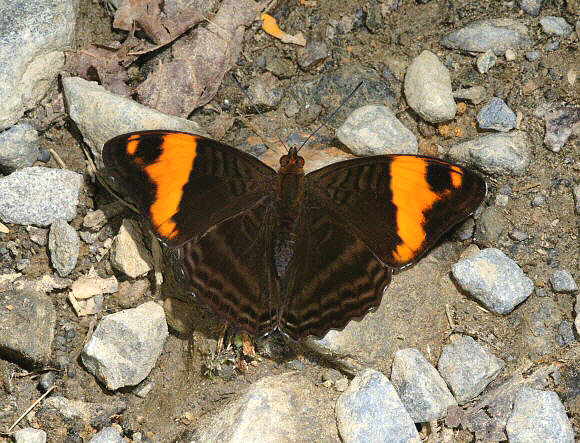
Introduction
Adelpha butterflies are colloquially known as “Sisters”. In terms of appearance they are reminiscent of the White Admirals ( Limenitis ) of Eurasia, and share with them a fondness for flitting gracefully around the lower branches of trees in the dappled sunlight of the forest.
There are 85 known species of Adelpha, all except two of which are confined to Central and South America. They are characterised by the distinctive black marbled pattern overlaid on a dark brown ground colour; and by having a broad orange or white band on the forewings. In the vast majority of species this band also extends vertically down to the tornus of the hindwings.
While it is easy to recognise the genus, determining the individual species can sometimes be very difficult – a problem exacerbated by misidentified museum specimens and mislabelled illustrations in many entomological books. The only reliable identification resource is “The genus Adelpha” by Keith Willmott. Accurate identification requires meticulous examination of the configuration of the orange markings in the subapical area on the forewing, and of the precise shape of the vertical bands. It is also essential in most cases to examine the patterning on the underside.
Adelpha boreas can be confused with several other species including saundersii, ximena, irmina and salus. These species are distinguished from one another by close examination of the pattern formed by the orange band on the forewings, and by differences in the underside markings.
Adelpha boreas is a widespread species found from Costa Rica to Bolivia.
Habitats
This species occurs in primary and disturbed rainforest and cloudforest habitats at altitudes between about 200-1200m.
Lifecycle
The egg is white, and is laid singly on leaves of Satyria ( Ericaceae ). The young larva nibbles away at the tip of a leaf, leaving the midrib projecting. It constructs a chain of frass along the midrib and rests at the end of it. Frass chains appear to act as a deterrent to ants, spiders and parasitoids who it difficult to walk on them. The fully grown larva is disguised as a mossy twig, being mottled green and brown, and covered with small whorled spines.
Adult behaviour
This species is usually encountered as solitary males, seen flitting and gliding in sunny areas in the vicinity of waterfalls and streams. The butterflies periodically alight to imbibe moisture from damp ground, and usually feed with wings outspread or half open.
